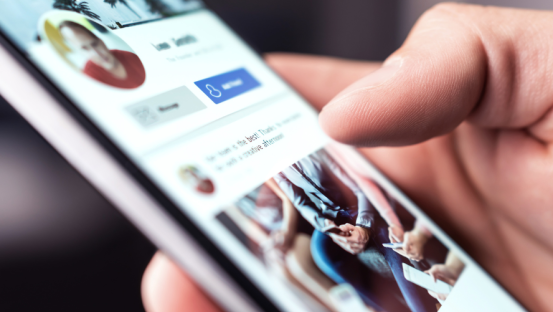Present to a packed room: How to get the audience to come to your session

Few things feel better professionally than presenting in front of a packed room, and few things worse than presenting in front of a room full of empty chairs.
And at a conference with a lot of great speakers and industry experts: if you don’t put the effort in beforehand, your session might get overlooked by the attendees.
Want to make sure your room is packed? This article delves into what you can do to ensure everyone knows about your session, and more importantly—they come.
1. Connect with the event organizers to see what resources are available to you
Want to know the best way to motivate the specific audience who is coming to a conference? Ask the event organizer.

Asking them will not only help you fill the seats in your session, but can help you give the best talk possible.
Here are 10 questions to ask the event organizer before a conference:
-
How should I talk to the audience? How can I appeal to them?
-
What is the best way to connect with the audience before the session?
-
Which is the best social media platform to focus on?
-
Are there contact lists for attendees, speakers, and/or sponsors?
-
What is the hashtag for the conference?
-
Can I have the handles for a handful of the influencers who will be attending the conference whom I can connect with online?
-
Can I meet and greet the attendees before the session at the conference?
-
What kind of information would help my session shine promotionally? What should my focus and tone be for my biography, session title and descriptions? Can I send the organizers photos and additional links?
-
What other sessions will be happening at the same time as mine, if any?
-
Will there be invited journalists and bloggers, to whom I can offer insights beforehand?
By starting here, you will have a very clear idea of where to find the audience and influencers, how to customize your content to appeal to them, and what resources you can offer them to be able to promote your session for you.
Want more tips on questions to ask the event organizer before your presentation? Read this article next “35 Expert questions to ask event organizers before accepting to speak”
2. Offer immediate value to your potential attendees
Want to catch the attention of your audience? Give them something of value right off the bat.
Offer them great content, an alluring session title and description, and make sure you regularly share your insights on social media.

1. Share valuable content: Pick a topic and level that will increase the skills or knowledge of your audience
Your content has to match the needs of your audience.
Figure out what their needs are before you even begin crafting your talk.
Once you find out what their needs are, create a session that will level-up their skills.
It’s all about finding the right balance. You don’t want to pitch at a level below their skills, but you don’t want to go too far above their skill level either.
Pick a fascinating, trending topic and offer the audience new, and interesting information.
Then make sure you include what you are offering in the title or description of your talk.
2. Sell your session with a tantalizing title and description
For a lot of audience members, the title and description of your session will be the only information they have to go on when making the decision to come to your session or not, so make it compelling.
Use high impact words that will instantly capture the audience's attention and deliver value right away. What will they take away from the session? What are you offering that will be helpful to them?
If you are having trouble coming up with a title, take inspiration from session titles used by expert speakers in the past.
Take a look at this shortlist from some of the most watched TED Talks:
-
“Your body language may shape who you are”
-
“10 things you didn’t know about orgasms”
-
“How to speak so that people listen”
-
“What makes a good life? Lessons from the longest study on happiness”
-
“The thrilling potential of SixthSense technology”
Notice how these titles get straight to the point and the heart of the content. They immediately let the audience know what the talk is going to be about, while showcasing the benefits of listening.
Find out more about creating alluring titles with Aurora Gregory’s webinar on SpeakerHub “Get Picked”.
Top tip: Focus on selling your session with your title and description, because at the end of the day, your description is a sales letter to your audience, it will make a difference as to whether people show up.
3. When talking about your session, either on or offline, offer value to your audience.
Overused statements like:
“Come to my session, it’s going to be good.”
or
“So pumped about my upcoming session at MadeUp Conference! Hope to see you there! #MadeUpHashTag2018”
Are neither compelling, nor do they offer anything of value.
Instead, entice people! Use a startling fact and give them a reason to come.
“Did you know 80% of online audiences now prefer video to articles? I am going to show some easy video hacks that anyone with a smartphone can do.”
or
“Current agricultural trends experts predict that dairy milk will become obsolete by 2050. I’ve got a bunch more interesting stats I am sharing in my next session, come along and we can discuss these afterwards?”
Convince them that they will walk away with something useful by going to your session. It will positively influence their decision.
3. Put in the work on social media
One of the best things about the modern era of social media is that you can connect with hundreds of thousands of people from around the world, no matter where you are.
It does take consistent work, but don’t be afraid of rolling up your sleeves. This groundwork will all be worthwhile when you are presenting to a room full of people looking forward to hearing your insights.

Here are our top 4 tips for promoting you session via social media.
1. Find out where the audience is and get in on the conversation, in advance
Find out from the organizer where people are going to be talking about the event.
Will they be on LinkedIn? If so, where will they be discussing it?
Are they active on Twitter? Is there a group of people (audience members, sponsors, or other speakers) who the event organizer could suggest you reach out to to start a conversation? Look and see who is going to be at the session and start reaching out.
2. Post using the hashtag.
There is a 90% chance that the event will have a hashtag set up that they are planning to use throughout the event. Find out what it is, and don’t forget to use it for each post.
When you are posting, always try to include a visual component. Whether this is video, a well-designed quote or fact, a photograph which captures the essence of your topic, or even a photo of you presenting. These will make more of an impact on the hashtag feed.
3. Find out what the audience questions are (Q&A) before your session
While you can use social media as a platform to go through Q&A’s during and after your presentation, it can be a helpful tool to help you determine the needs of your audience before you even start drafting your talk.
Get creative with how you ask your questions as well. Instead of a generic “What would you guys like me to talk about?” delve a little deeper and use the multimedia tools available to you—like multiple-choice questions, sliding scales, or polls.
Instead of proffering answers directly on social media, use people’s curiosity to motivate them to come to your session by saying things like “This is an interesting question, and I can’t wait to dive into the answer in my upcoming session at #EventHashtag [date and time.]”)
You should be always looking for more ways to compel them to come to your session.
Take screen grabs of the questions and the polls, and put them right into your presentation.
Just be sure to remember the people who come to the session in person too, by scheduling time to take a few questions from your live audience.
4. Be very active during the conference, post interesting quotes, retweet content, and invite, invite, invite.
Being active doesn’t mean schedule a bunch of posts that repeat over and over the title and time of your session—you need to get genuinely involved with the conference online.
This means joining in on conversations with other speakers, sponsors, event organizers and audience members. Promote other speakers’ sessions that you are planning on attending, or know are going to be worthwhile.
Get to know the people who are going to the event, find out what they are looking forward to and what they hope to get out of it.
Once you’ve started establishing relationships, start sending out personal invites. Ask them to come and meet you in person after your talk.
Remember social media is about building communities, it’s not just a soap box.
4. Lean on your network:
No man, or woman for that matter, is an island—ask your network to help you promote your session.

There is a good chance that the people who will be most interested in your topic and session will be those you are already connected with, so make sure they know about it by personally inviting people.
Especially if you know a lot of people who are in your industry, and you know some of their audience will be attending the event. (These people are going to be more helpful than your niece who lives in another country, discriminate when choosing who you ask to promote you.)
Send them images and text that they can use on social media, and offer to return the favor for them in the future.
After you’ve created a new promotional post, send some of your influential colleagues a private message, and request that they comment or share/retweet your posts.
Lastly, use your newsletter to promote the event and your session. If you don’t have your own newsletter, see if someone in your network does, and whether they would be willing to share the link to your session with their audience.
Be tactful, and remember their time and attention is valuable, so ask accordingly.
3 bonus ideas:
- Creating online content
Promote the event on your own blog, you can do multiple posts leading up to the event.
Don’t have a blog? Connect with someone within your industry with an audience and offer to write a guest post.
See if you can contribute a guest post to the conference organizers’ blog, and once again, go back to offering value to the audience. Give them a reason to come to your session.
You can also create a list or article covering additional resources which those who are interested in your session could use to get up-to-date before your talk.
Lastly, invite journalists and bloggers that are on the press list to come to your session and offer to do an interview after.
- Connect with sponsors
Check the sponsors lists to find organizations and products you would like to be associated with (and who you genuine like) and see if you can integrate it somehow into your session.
You can ask the event organizer to put you in contact with them (via email). From here, talk to them and let them know that you will be mentioning them or their product, and ask them to promote your session on social media or in their newsletter.
- Play the long game
Use upcoming events that you are speaking at to promote the future events on your calendar.
When you are concluding your session and telling the audience how to contact you or where to find additional resources, add a promo for you next event!
You can start to build a loyal following in this way, and while it won’t help you fill seats at the current event, it could help in the long run.
Want to find more events to speak at? We have a marketplace where event organizers from around the world who are looking for speakers post their events. Search for events now.








